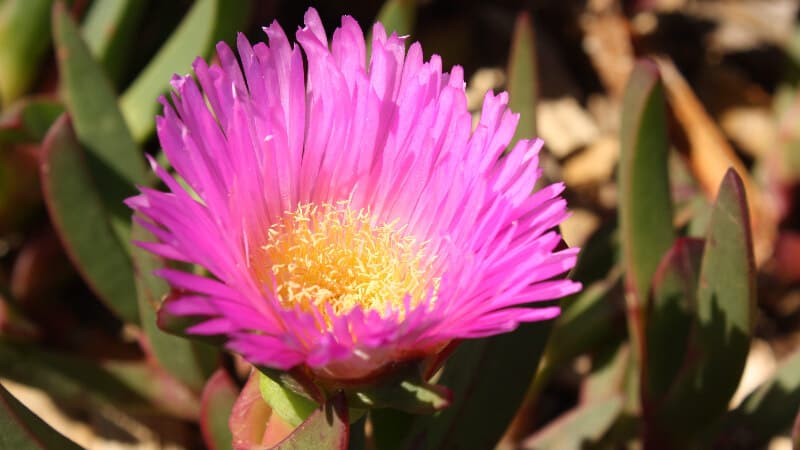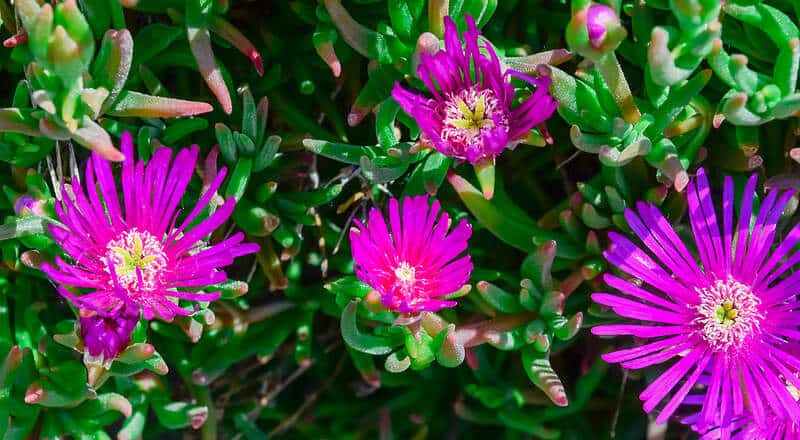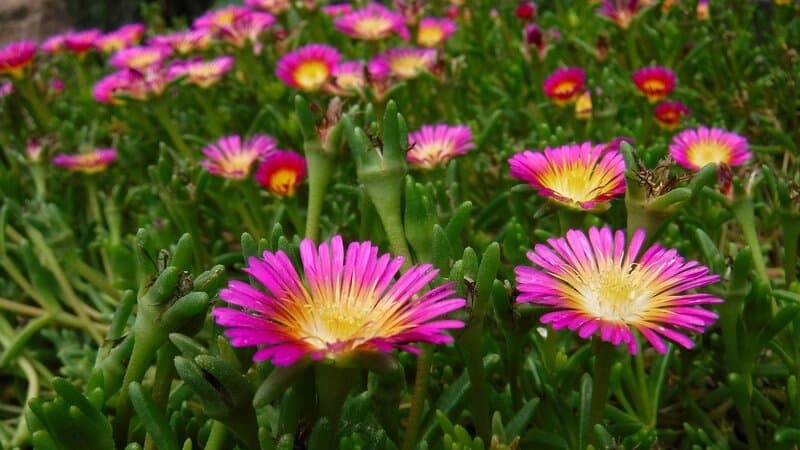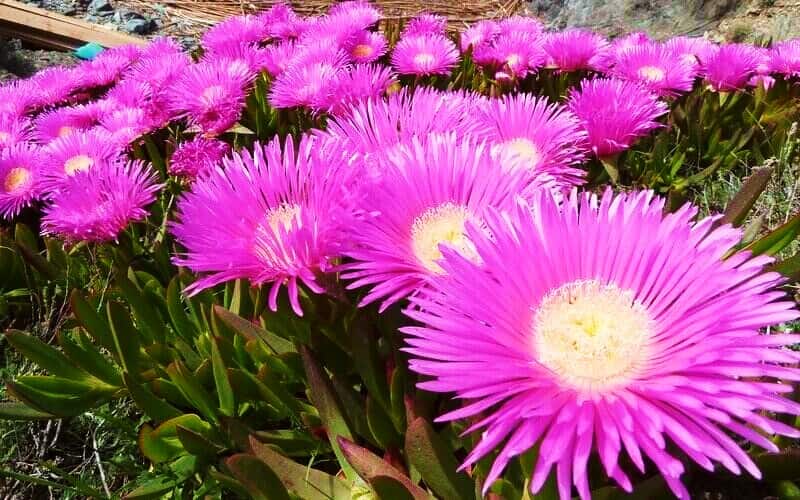They may not have the most attractive of names, but the pig face plant (carpobrotus glaucescens) has some stunning blossoms. Many of you may be familiar with its daisy-like flowers in bursts of pink, red, and purple. Its name actually derives from the pig-like shape of the fruit, which it produces after flowering.
In the wild, this rambling plant grows in coastal areas, helping hold together soil and sand along slopes. But it’s also perfect for a touch of colour in your garden — whether among rocks, under shade, or in a hanging basket.
What is pig face?
Carpobrotus glaucescens is a creeping, flowering succulent — hence the chubby leaves — that grows as ground cover. It’s mostly native to South Africa, but several species are native to Australia. Pig face plants are highly tolerant of salt and wind, which is why they commonly grow in Australian coastal areas, but they’ll thrive inland as well!
You’ll recognise the pig face plant by its squishy, tube-like, blue-green leaves that poke up from the soil. In spring and summer, they’ll put up long-petaled flowers, which will later wilt and turn into that signature piggy-shaped fruit.
The root system is the most significant part of pig face plants. Under the ground, the roots hold fast, preventing soil and sand from slipping down inclines. That makes them great soil stabilisers — especially along a beach!
Benefits of growing pig face
There are plenty of uses for pig face plants beyond their root systems — which is great if you have a sloped backyard. Some may surprise you, but they’re all the more reason to grow pig face in your garden!
They’re edible. Who’d have guessed? Pig face is a bush food that has long been a food source for Aborigines. The fruits make an excellent jam or jelly, of course, but you can eat the leaves and flowers too. Add them to your salad for a salty kick, or cook them as a salt substitute.
They provide burn relief. Much like aloe, another succulent, the juice from pig face leaves can help soothe bites, burns, and stings on your skin. You can also mix it with water as a gargle treatment for sore throats.
They make great kid-friendly succulents. Unlike the prickly cactus, pig face doesn’t have spikes or scales, so it’s perfect for teaching your children how to help around a garden.
Pig face care
If you want to grow pig face plants in your garden, here are some considerations to keep in mind:
Soil
Pig face will thrive best in well drained soil, under rocky or sandy conditions. Don’t plant it somewhere too loamy since this isn’t their native habitat. You can prepare your soil before planting — ask for help from a gardening professional if needed! — by treating it with fertiliser.
Location
Pig face plants love partial shade to full sun, and cool to subtropical climates. They’re fairly tolerant to drought, humidity, and salt, but will rot if waterlogged. Consider growing these if you have a house near the coast, or if you live somewhere dry and sandy. They’re also very attractive in rock gardens!
Planting
You can grow pig face from both cuttings and seeds, but it’s easier to propagate from cuttings. Choose somewhere with full sun, and dig a hole in the soil. Layer horizontal stem cuttings with at least 5cm above-ground, or plant the root ball in a hole of the same depth but twice as wide.
Backfill soil over the cuttings, then form a raised ring of earth around the outer edge of the root zone. Don’t pack the earth too tight!
For pots, choose one at least twice the size of a root ball. Use sandy potting mix for best results, and position the pot somewhere sunny.
Watering
Water pig face well after planting to help settle the soil and keep it moist while the plant establishes itself. After that, only water whenever the soil is dry — it’s a succulent, so it’ll be fine!
Mulching
You can mulch pig face around the base with organic matter such as bark, sugarcane, or straw — but keep it away from the base! You can use a slow-release native fertiliser in spring and autumn to boost its growth.
Pruning
Trim off any spent flowers, and damaged or dry leaves. Winter is the best time to prune a pig face plant, to promote abundant spring blooms.






